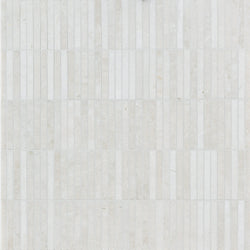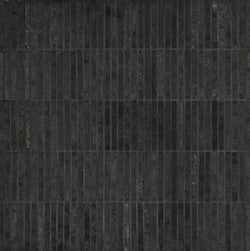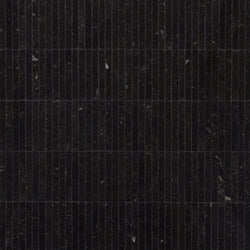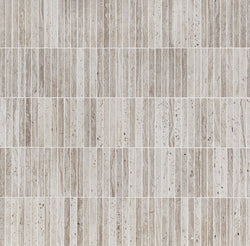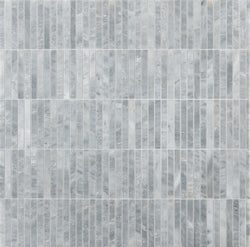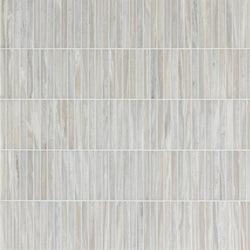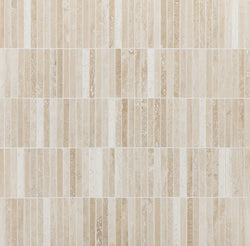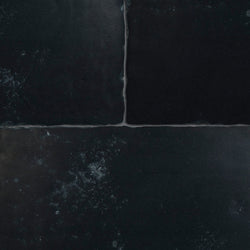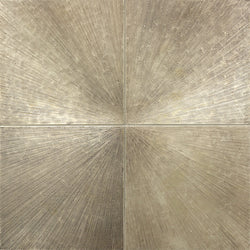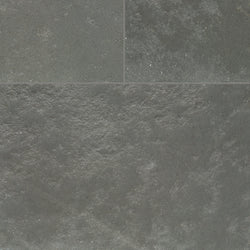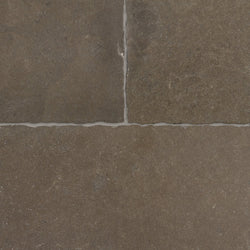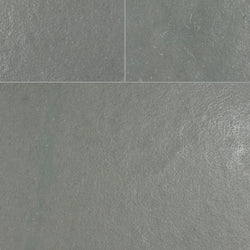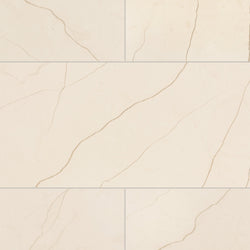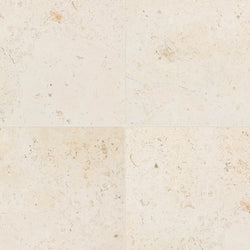
Abbey road bianco dolomiti dolomite mosaic
11-7/8" X 12-7/16" X 3/8"
Bianco Dolomiti
Honed
$50.00 per S/F
Timeless, versatile limestone tile suitable for improving the aesthetics of kitchens, bathrooms, backsplashes, and more. Find tiles in the material, size, color, and finish that complement the floors and walls in your home. Our stylish, durable limestone tiles will add depth and charm to your living space.
If you step right into a home that feels welcoming and balanced, there's a good chance the floors or walls you see might be limestone tile. This natural stone comes from the earth, shaped by time and pressure. It is no wonder many who want to give their interiors warmth and character turn to this remarkable material. Unlike material that is artificial or overly glossy, this is a rock that was once formed over centuries. The result is something that can truly create a sense of calm wherever it's used.
Limestone is a rock that forms when tiny organisms and other minerals settle beneath ancient seas. Over the ages, these deposits harden, turning into layers of stone that we now call limestone . Once quarried, large blocks are cut and then shaped into the tiles we know. The beauty of these tiles is not about a loud splash of color; it tends to be more like a neutral backdrop that will never feel too heavy or overwhelming. The colors often range from pale creams, beige, and off-whites to subtle grey tones, each with its own quiet character. There is a steady sense of calm within these stones as if each piece carries a whisper from a time long before anyone walked the earth.
One reason limestone floor tiles are a popular choice is their ability to handle day-to-day life indoors. The flooring made from limestone performs well in many areas, whether it's the kitchen, bathroom, hall, or living room. It also works beautifully on walls, acting as a gentle canvas upon which furniture and décor stand out. Many consider it a neutral backdrop that highlights other features.
In kitchens, limestone on floors or countertops sets a calm stage for cooking or conversation. A limestone backsplash tile behind the stove can transform a functional area into a visually pleasing feature. In the bathroom, limestone is equally appealing. Limestone bath tiles on showers, floors, or even shower tiles create a spa-like atmosphere. Limestone bathroom tile feels solid beneath your feet and, with proper care, lasts a long time.
Limestone doesn't hit you over the head with busy patterns. Instead, it has gentle color shifts and light speckling. One of the appealing points is the range of finishes available. The stone can be honed, making it smooth and matte, or it can be tumbled limestone tile for a slightly worn, softer look. Even a textured finish can be used if you want a certain grip underfoot. No matter what you pick, the final finish will show off its natural charm.
If you want more of a decorative, limestone mosaic tile might catch your eye. The small pieces create patterns that feel hand-crafted. Decorative tile made of limestone can frame a backsplash, enliven a hearth, or even become a piece of art on a wall. Mosaic patterns can be intricate or simple, but each piece carries a part of the stone’s quiet story.
The coloring in limestone is gentle. You might come across black limestone tile, gray limestone tile, or simply pale cream tones. For those who prefer a lighter look, grey and off-white set a calm mood. Beige tones warm up a room, while a black limestone tile can act as a striking contrast against light furnishings. Each shade offers a distinct mood, and because the stone forms in layers over centuries, each batch might differ slightly. That is part of the charm since it never feels too uniform.
If you place limestone tile flooring in your living room, you might want a pattern that flows naturally. Large-format tiles set in rows can create a feeling of spaciousness, while smaller tiles arranged in a pattern draw the eye. A limestone mosaic tile border in a hallway can give that corridor a visual rhythm. In a bathroom, limestone bathroom tile might cover the shower walls and the floor below. In a kitchen, a limestone backsplash tile behind the sink or stove can show off that stone’s layered history. The stone can be cut into different shape formats—square, rectangular, and even more intricate patterns—so that you have some room to get creative.
Limestone is stone, so it needs a bit of attention to keep it looking fresh. If you use a gentle cleaning approach, clean limestone tile will reward you with its steady look. It’s wise to mop it with mild cleansers that don’t harm the stone’s surface. Avoid harsh chemicals. After the installation phase, a sealing treatment is often recommended. This extra layer acts like a guardian, keeping everyday spills from sinking in. If you do this, you can help keep the stone looking bright for years.
The best way to keep it in top shape is by handling it with care. Quick cleanup of spills helps. A slightly damp cloth can pick up dirt before it sets. Over time, limestone can develop a gentle patina that only deepens its character. Some prefer a honed finish for its matte quality, which helps it age in a more understated way. Others pick a tumbled limestone tile and look for that lived-in character right from the start.
Although floors are common places for limestone, you can also use it on walls, countertops, or as a limestone backsplash tile. On a wall, it can frame a fireplace, making that corner of the room feel anchored. Along the countertops in a kitchen, limestone brings a calm, grounded look. As a shower surround, limestone shower tile can turn an ordinary rinse into a moment that feels soft and natural. Outdoors, where conditions permit, limestone can even line a patio or garden path, blending with the natural world beyond your doors.
This stone carries a weight of history since it formed from tiny sea life countless eons ago. Natural limestone is simply rock from the earth, carved and shaped to fit into human homes. Its quiet personality is the opposite of flashy. You can find it in lavish estates or modest dwellings because it has a humble heart. Natural stone like limestone has been used for centuries. Look at old cathedrals, ancient buildings, and other historic structures. Many of these incorporate limestone in floors, walls, and pillars. Its presence there is a reminder that this stone does not simply vanish or go out of style.
The interiors of a home come in many shapes and sizes. Some spaces are bright and open, others are cozy and snug. Limestone works well across these differing zones. It can complement light and dark furnishings alike. In a large open-plan living area, pale natural limestone can help bring a calm mood. In a smaller bathroom, limestone bath tiles create a feeling of ease. In a kitchen, a limestone backsplash that sits behind wooden cabinets or granite counters can frame the room in a simple, earthy way. The stone’s presence in a home can tilt the mood toward something that feels unhurried and organic.
When settling on limestone, you have the freedom to pick a finish, shape, and pattern that matches your personal style. A polished finish offers a smooth look, while a honed finish leaves the stone matte. Tumbled limestone tile looks as if it has been worn gently by time. If you love detail, limestone mosaic tile can produce patterns that reflect personal taste. If you lean toward quiet simplicity, large tiles in a pale beige or gray limestone tile may suit you best. Those who want a statement look might opt for a black limestone tile to give a dramatic contrast against lighter walls or furnishings.
Installation of limestone tiles often involves careful laying out of patterns and checking that the floor or wall is even. Skilled professionals might work slowly to set each limestone tile in place, leaving appropriate gaps and leveling as they go. Once the tiles are set, the grouting stage begins. This is where a steady hand helps, as the final look depends on getting those lines just right. After that, a sealing treatment can be applied. A good quality sealant keeps the stone from absorbing spills too quickly.
Once sealed and settled, your limestone tiles can stand the test of time. If any scratches occur, a gentle refinishing can help restore its natural glow. The stone doesn't try to steal the spotlight; it quietly supports the rest of the décor, making it easier to arrange furniture and art as years pass. The fact that it isn't too trendy also helps since you won't feel pressured to redo your floors the next time home design fads shift.
Limestone has walked through centuries with humankind, from ancient monuments to modern living rooms. Its beauty isn't loud or over-the-top. Instead, it lies in the quiet dance of textures, gentle colors, and subtle patterns that never scream for attention. This is a stone from the earth’s heart, patiently waiting to lend its charm to a home. If you pick limestone, you’re not only getting a material that looks good today. You’re stepping into a longer story, linking your own interiors to geological ages past. And that is why a home graced with limestone tile flooring, limestone backsplash tile, or limestone bathroom tile feels connected to something deeper. It’s a choice that honors nature and the quiet grace of stone shaped by time.
Limestone tile can give your space a nice, grounded look that many people like. They often hold up fine when you care for them properly. Just remember, they might not fit every area in your home, so you should think about where you put them.
They can chip if something hard strikes them, and they might stain from spills like red wine or oil. Some folks feel they call for more care than other options. If you want something that doesn't demand extra time, these might not suit you.
It can run higher in price compared to ceramic. Quality, color, and size will shape what you pay. You can look around to find what fits your budget and taste.
Limestone can be a bit tricky. You can't just use any harsh cleaner, and it might mark up if you pick the wrong cleaner. Gentler methods tend to work better, and a simple sweep or light mop with mild soap and warm water helps.
Limestone tile can be high maintenance. You might need to seal them from time to time, and it's wise to wipe up spills right away. With a bit of attention and the right products, you can keep them looking good.
Dark spots can show up if grime or mold settles in when moisture sits too long. Lack of proper sealing lets these marks take hold, so keeping up with care is wise.
Limestone can last for decades; that's how durable they are. Good care goes far, and those who treat them gently often enjoy them for a very long time.
It's not a great idea. Bleach may harm the material and leave ugly marks. It’s better to pick stone-friendly cleaners that won’t cause damage.
It depends on how much foot traffic they get. Some homeowners seal once a year, while others wait longer. Keep an eye on them—if water no longer sits on the surface, it might be time to seal them again.
11-7/8" X 12-7/16" X 3/8"
Bianco Dolomiti
Honed
$50.00 per S/F
11-7/8" X 12-7/16" X 3/8"
Nero
Honed
$40.00 per S/F
11-7/8" X 12-7/16" X 3/8"
Calacatta Gold
Honed
$50.00 per S/F
11-7/8" X 12-7/16" X 3/8"
Vanilla
Honed
$55.00 per S/F
11-7/8" X 12-7/16" X 3/8"
White Sand
Honed
$44.00 per S/F
11-7/8" X 12-7/8" X 3/8"
Arabescato D'oro
Honed
$51.00 per S/F
12-7/16" X 11-7/8" X 1/2"
Noir
Antiqued
$36.00 per S/F
12-7/16" X 11-7/8" X 1/2"
Sea Grey
Antiqued
$36.00 per S/F
11-7/8" X 12-7/16" X 3/8"
Birch White
Honed
$50.00 per S/F
11-7/8" X 12-7/16" X 3/8"
Viola Reale
Honed
$56.00 per S/F
11-7/8" X 12-7/16" X 3/8"
Bianco Carrara
Honed
$40.00 per S/F
11-7/8" X 12-7/16" X 3/8"
Ocean Blue
Honed
$64.00 per S/F
11-7/8" X 12-7/16" X 3/8"
Belgian Bluestone
Honed
$40.00 per S/F
11-7/8" X 12-7/16" X 3/8"
Cloud
Honed
$38.00 per S/F
11-7/8" X 12-7/16" X 3/8"
Grigio Toscana
Honed
$48.00 per S/F
11-7/8" X 12-7/16" X 3/8"
Smoke
Honed
$42.00 per S/F
11-7/8" X 12-7/16" X 3/8"
Volakas White
Honed
$43.00 per S/F
11-7/8" X 12-7/8" X 3/8"
Rosa Minerva
Honed
$51.00 per S/F
11-7/8" X 12-7/16" X 3/8"
Bianco Dei
Honed
$64.00 per S/F
12" X 12" X 3/8"
Bianco Carrara/Bronze
Textured
$125.00 per S/F
12" X 12" X 3/8"
Bianco Carrara
Textured
$72.00 per S/F
12" X 12" X 3/8"
Smoke/Silver
Textured
$125.00 per S/F
12" X 12" X 3/8"
Verde/Silver
Textured
$140.00 per S/F
Roman Antiqued 16" x 24" x 5/8" Stone Chiseled Edge
$30.00 per S/F
Metallic Stone
$90.00 per S/F
Metallic Stone
$90.00 per S/F
12" X 24" X 3/8"
Cloud
Deep Brushed
$30.00 per S/F
18" X 36" X 3/8"
Cloud
Deep Brushed
$32.00 per S/F
24" X 24" X 3/8"
Cloud
Deep Brushed
$30.00 per S/F
12" X 24" X 3/8"
Belgian Bluestone
Honed
$31.00 per S/F
24" X 24" X 3/8"
Belgian Bluestone
Honed
$39.00 per S/F
Roman Antiqued 16" x 24" x 5/8" Stone Chiseled Edge
$30.00 per S/F
Straight Edge
Odessa Black Belgian Bluestone
18" X 18" X 3/8"
$38.00 per S/F
Chiseled Edge
Odessa Black Belgian Bluestone
18 X 18 X 3/8"
$38.00 per S/F
12" X 24" X 3/8"
Grigio Toscana
Textured
$57.00 per S/F
12" X 24" X 3/8"
Belgian Bluestone
Textured
$62.00 per S/F
12" X 24" X 3/8"
Verde
Textured
$67.00 per S/F
6" X 16" X 3/8"
Gold
Metallic
$151.00 per S/F
6" X 16" X 3/8"
Silver
Metallic
$151.00 per S/F
24" X 24" X 5/8"
Bianco Carrara
Mixed Finish
$160.00 per S/F
24" X 24" X 5/8"
Gris
Mixed Finish
$80.00 per S/F
24" X 24" X 5/8"
Moss Green
Mixed Finish
$80.00 per S/F
24" X 24" X 5/8"
Lake Blue
Mixed Finish
$80.00 per S/F
9" X 18" X 3/8"
Bianco Carrara
Textured
$53.00 per S/F
9" X 18" X 3/8"
Grey Foussana
Textured
$53.00 per S/F
9" X 18" X 3/8"
Smoke
Textured
$53.00 per S/F
9" X 18" X 3/8"
Thassos
Textured
$82.00 per S/F
9" X 18" X 3/8"
Belgian Bluestone
Textured
$56.00 per S/F
Roman Antiqued 16" x 24" x 5/8" Stone Chiseled Edge
$31.00 per S/F
Honed 12" x 24" x 3/8" Stone
$31.00 per S/F
$420.00 each
Honed 24" x 24" x 3/8" Stone Aris Edge
$35.00 per S/F
Honed 12" x 24" x 3/8" Stone Aris Edge
$31.00 per S/F
Rustic 16" x 24" x 5/8" Stone Straight Edge
$26.00 per S/F
Honed 18" x 18" x 3/8" Stone Straight Edge
$20.00 per S/F
24" X 48" X 11/32"
Cream
Semi-Polished
$19.00 per S/F
24" X 48" X 11/32"
Sand
Semi-Polished
$19.00 per S/F
$614.00 each
Honed 18" x 32" x 9/16" Stone Straight Edge
$33.00 per S/F
18-7/16" X 20-5/16" X 3/8"
White
Mixed Finish
$220.00 per S/F
18-7/16" X 20-5/16" X 3/8"
Black
Mixed Finish
$220.00 per S/F
6" X 12" X 3/8"
Smoke
Textured
$136.00 per S/F
6" X 12" X 3/8"
Bianco Antico
Textured
$136.00 per S/F
Antiqued Stone Broken Joint 3.0cm
$28.00 per S/F
16" X 16" X 1/2"
Nero
Honed
$180.00 per S/F
16" X 16" X 1/2"
Volakas White
Honed
$180.00 per S/F
16" X 16" X 1/2"
Moca Cream
Honed
$180.00 per S/F
12" X 24" X 3/8"
Jerusalem Pearl
Mixed Finish
$42.00 per S/F
12" X 24" X 3/8"
Thassos
Mixed Finish
$67.00 per S/F
12" X 24" X 3/8"
Lilac
Mixed Finish
$36.00 per S/F
12" X 24" X 1/2"
White Sand
Mixed Finish
$41.00 per S/F
Antiqued Stone Broken Joint 3.0cm
$28.00 per S/F
Honed 16" x 24" x 3/8" Stone Straight Edge
$21.00 per S/F
12" X 24" X 3/8"
Grey Foussana
Honed
$35.00 per S/F
18" X 36" X 3/8"
Grey Foussana
Honed
$38.00 per S/F
16" X 16" X 1/2"
Sea Grey
Polished
$145.00 per S/F
16" X 16" X 3/8"
Nero
Honed
$175.00 per S/F
12" X 24" X 1"
Bianco Carrara
Mixed Finish
$223.00 per S/F
12" X 24" X 1"
Smoke
Mixed Finish
$244.00 per S/F
Honed 12" x 24" x 3/8" Stone
$41.00 per S/F
Honed 18" x 18" x 3/8" Stone Aris Edge
$28.00 per S/F
Roman Antiqued 18" x 18" x 3/8" Stone Chiseled Edge
$35.00 per S/F




